你知道怎么使用Google两步验证保护账户安全吗?
为什么我们需要使用它?
互联网是一个极其危险的地方,有很多不怀好意的人想要访问我们的在线账户。通过使用双因素身份验证,可以为我们的账号提供额外的安全。用户名密码方式的登录变得越来越不安全,你肯定听说过“撞库”这个名词,是黑客圈的术语,即网络黑客将互联网上已泄露的账号密码,拿到其他网站批量登录,从而“撞出”其他网站的账号密码。很不幸的是,由于许多网民习惯多个网站使用一个账号密码,所以“撞库”有着不低的成功率。

对有些人来说,盗取密码比您想象的更简单
以下任意一种常见操作都可能让您面临密码被盗的风险:
- 在多个网站上使用同一密码
- 从互联网上下载软件
- 点击电子邮件中的链接
两步验证可以将别有用心的人阻挡在外,即使他们知道您的密码也无可奈何。
什么是Google两步验证?
借助Google两步验证,通过密码和手机为帐户提供双重保护
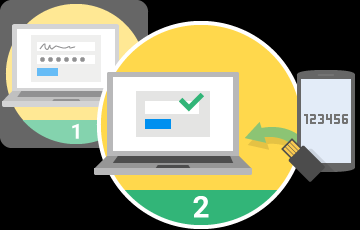
Q
第一步:您需要输入密码
每当您登录账户时,都需要照常输入账号密码。
第二步:还需要执行其他操作
接着,验证码将会以短信的形式发送到手机上或通过语音电话告知,或者通过Google Authenticator App生成提供。
多一道安全防线
大多数用户的帐户只有密码这一道安全防线。启用两步验证后,即使有人破解了您的密码,他们仍需要借助您的手机或安全密钥,才能登录您的帐户。
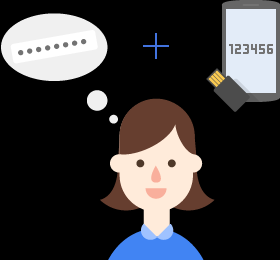
什么是Google Authenticator ?
Google Authenticator(Wiki)是谷歌推出的基于时间的动态口令app(谷歌身份验证),只需要在手机上安装该APP,就可以生成一个随着时间变化的一次性口令,解决大家的账户遭到恶意攻击的问题,在手机端生成动态口令后,除了用正常用户名和密码外,需要输入一次动态口令才能验证成功。
Google Authenticator采用的算法是TOTP(Time-Based One-Time Password基于时间的一次性密码),其核心内容包括以下三点:
- 一个共享密钥(一个字节序列);
- 当前时间输入;
- 一个签名函数。
具体原理推荐大家阅读:
我在这里准备了一个完整可执行的C# WinForm程序,感兴趣的朋友请 点击这里 进行查看,提取码:hemd。
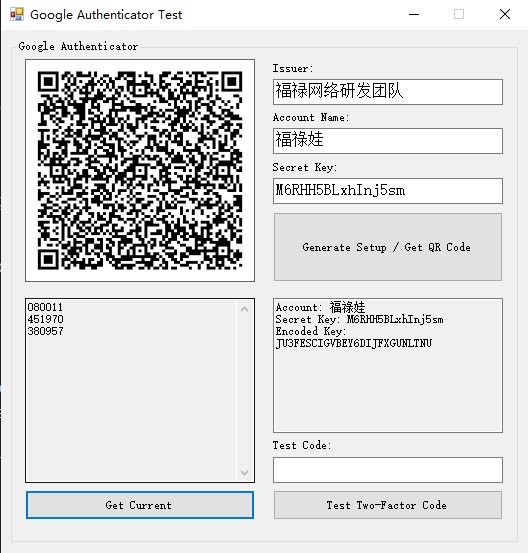
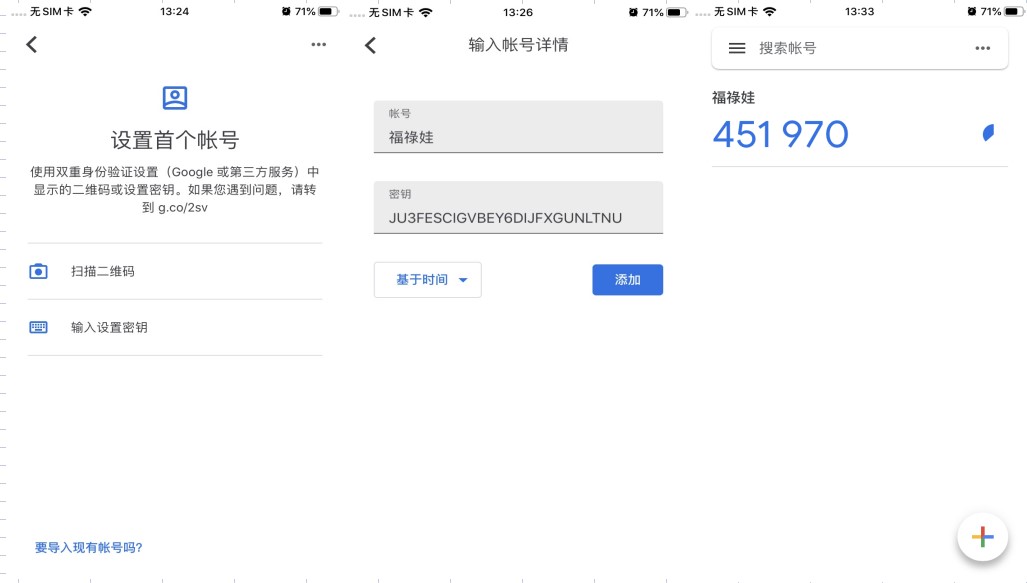
- Account Name:对应我们的账号名,可以是手机号、邮箱等
- Secret Key:这个是我们的密钥Key,用于生成密钥。一般我们将这个值存放在用户表中的某个字段中。
- Encoded Key:这个是最终生成的密钥,用户如果无法扫码二维码,我们可以将密钥发送至用户手机。
上图中,可以看出有3个口令,即我们在代码中设置的漂移为30s,主要是防止出现如下问题:
- 由于网络延时,用户输入延迟等因素,可能当服务器端接收到一次性密码时,T的数值已经改变,这样就会导致服务器计算的一次性密码值与用户输入的不同,验证失败。解决这个问题个一个方法是,服务器计算当前时间片以及前面的n个时间片内的一次性密码值,只要其中有一个与用户输入的密码相同,则验证通过。当然,n不能太大,否则会降低安全性。
- 我们知道如果客户端和服务器的时钟有偏差,会造成与上面类似的问题,也就是客户端生成的密码和服务端生成的密码不一致。但是,如果服务器通过计算前n个时间片的密码并且成功验证之后,服务器就知道了客户端的时钟偏差。因此,下一次验证时,服务器就可以直接将偏差考虑在内进行计算,而不需要进行n次计算。
下面是C#源码提供:
public class TwoFactorAuthenticator
{
private static readonly DateTime _epoch = new DateTime(1970, 1, 1, 0, 0, 0, DateTimeKind.Utc);
private TimeSpan DefaultClockDriftTolerance { get; set; }
public TwoFactorAuthenticator()
{
DefaultClockDriftTolerance = TimeSpan.FromSeconds(30); //建议此处将时间漂移设置为30s,即允许前后各一个时间片。不能不建议设置太大,否则会降低安全性
}
public TwoFactorAuthenticator(TimeSpan defaultClockDriftTolerance)
{
DefaultClockDriftTolerance = defaultClockDriftTolerance;
}
/// <summary>
/// Generate a setup code for a Google Authenticator user to scan
/// </summary>
/// <param name="issuer">Issuer ID (the name of the system, i.e. 'MyApp'), can be omitted but not recommended https://github.com/google/google-authenticator/wiki/Key-Uri-Format </param>
/// <param name="accountName">Account Name (no spaces)</param>
/// <param name="accountSecretKey">Account Secret Key</param>
/// <param name="qrPixelsPerModule">Number of pixels per QR Module (2 pixels give ~ 100x100px QRCode)</param>
/// <returns>SetupCode object</returns>
public SetupCode GenerateSetupCode(string issuer, string accountName, string accountSecretKey, int qrPixelsPerModule)
{
var key = Encoding.UTF8.GetBytes(accountSecretKey);
return GenerateSetupCode(issuer, accountName, key, qrPixelsPerModule);
}
/// <summary>
/// Generate a setup code for a Google Authenticator user to scan
/// </summary>
/// <param name="issuer">Issuer ID (the name of the system, i.e. 'MyApp'), can be omitted but not recommended https://github.com/google/google-authenticator/wiki/Key-Uri-Format </param>
/// <param name="accountName">Account Name (no spaces)</param>
/// <param name="accountSecretKey">Account Secret Key as byte[]</param>
/// <param name="qrPixelsPerModule">Number of pixels per QR Module (2 = ~120x120px QRCode)</param>
/// <returns>SetupCode object</returns>
public SetupCode GenerateSetupCode(string issuer, string accountName, byte[] accountSecretKey, int qrPixelsPerModule)
{
if (accountName == null) { throw new NullReferenceException("Account Title is null"); }
accountName = accountName.Trim();
var encodedSecretKey = Base32Encode(accountSecretKey);
var provisionUrl = string.IsNullOrWhiteSpace(issuer) ? $"otpauth://totp/{accountName}?secret={encodedSecretKey}" : string.Format("otpauth://totp/{2}:{0}?secret={1}&issuer={2}", accountName, encodedSecretKey, HttpUtility.UrlEncode(issuer, Encoding.UTF8));
using (var qrGenerator = new QRCodeGenerator())
using (var qrCodeData = qrGenerator.CreateQrCode(provisionUrl, QRCodeGenerator.ECCLevel.Q))
using (var qrCode = new QRCode(qrCodeData))
using (var qrCodeImage = qrCode.GetGraphic(qrPixelsPerModule))
using (var ms = new MemoryStream())
{
qrCodeImage.Save(ms, System.Drawing.Imaging.ImageFormat.Png);
return new SetupCode(accountName, encodedSecretKey, Convert.ToBase64String(ms.ToArray()));
}
}
public string GeneratePINAtInterval(string accountSecretKey, long counter, int digits = 6)
{
return GenerateHashedCode(accountSecretKey, counter, digits);
}
internal string GenerateHashedCode(string secret, long iterationNumber, int digits = 6)
{
var key = Encoding.UTF8.GetBytes(secret);
return GenerateHashedCode(key, iterationNumber, digits);
}
/// <summary>
///
/// </summary>
/// <param name="key"></param>
/// <param name="iterationNumber"></param>
/// <param name="digits">The digits parameter may have the values 6 or 8, and determines how long of a one-time passcode to display to the user. The default is 6.</param>
/// <returns></returns>
internal string GenerateHashedCode(byte[] key, long iterationNumber, int digits = 6)
{
var counter = BitConverter.GetBytes(iterationNumber);
if (BitConverter.IsLittleEndian)
{
Array.Reverse(counter);
}
var hmac = new HMACSHA1(key);
var hash = hmac.ComputeHash(counter);
var offset = hash[hash.Length - 1] & 0xf;
// Convert the 4 bytes into an integer, ignoring the sign.
var binary =
((hash[offset] & 0x7f) << 24)
| (hash[offset + 1] << 16)
| (hash[offset + 2] << 8)
| (hash[offset + 3]);
var password = binary % (int)Math.Pow(10, digits);
return password.ToString(new string('0', digits));
}
private long GetCurrentCounter()
{
return GetCurrentCounter(DateTime.UtcNow, _epoch, 30);
}
private long GetCurrentCounter(DateTime now, DateTime epoch, int timeStep)
{
return (long)(now - epoch).TotalSeconds / timeStep;
}
public bool ValidateTwoFactorPIN(string accountSecretKey, string twoFactorCodeFromClient)
{
return ValidateTwoFactorPIN(accountSecretKey, twoFactorCodeFromClient, DefaultClockDriftTolerance);
}
public bool ValidateTwoFactorPIN(string accountSecretKey, string twoFactorCodeFromClient, TimeSpan timeTolerance)
{
var codes = GetCurrentPINs(accountSecretKey, timeTolerance);
return codes.Any(c => c == twoFactorCodeFromClient);
}
public string GetCurrentPIN(string accountSecretKey)
{
return GeneratePINAtInterval(accountSecretKey, GetCurrentCounter());
}
public string GetCurrentPIN(string accountSecretKey, DateTime now)
{
return GeneratePINAtInterval(accountSecretKey, GetCurrentCounter(now, _epoch, 30));
}
public string[] GetCurrentPINs(string accountSecretKey)
{
return GetCurrentPINs(accountSecretKey, DefaultClockDriftTolerance);
}
public string[] GetCurrentPINs(string accountSecretKey, TimeSpan timeTolerance)
{
var codes = new List<string>();
var iterationCounter = GetCurrentCounter();
var iterationOffset = 0;
if (timeTolerance.TotalSeconds >= 30)
{
iterationOffset = Convert.ToInt32(timeTolerance.TotalSeconds / 30.00);
}
var iterationStart = iterationCounter - iterationOffset;
var iterationEnd = iterationCounter + iterationOffset;
for (var counter = iterationStart; counter <= iterationEnd; counter++)
{
codes.Add(GeneratePINAtInterval(accountSecretKey, counter));
}
return codes.ToArray();
}
private string Base32Encode(byte[] data)
{
const int inByteSize = 8;
const int outByteSize = 5;
var alphabet = "ABCDEFGHIJKLMNOPQRSTUVWXYZ234567".ToCharArray();
int i = 0, index = 0;
var result = new StringBuilder((data.Length + 7) * inByteSize / outByteSize);
while (i < data.Length)
{
var currentByte = data[i];
/* Is the current digit going to span a byte boundary? */
int digit;
if (index > (inByteSize - outByteSize))
{
var nextByte = (i + 1) < data.Length ? data[i + 1] : 0;
digit = currentByte & (0xFF >> index);
index = (index + outByteSize) % inByteSize;
digit <<= index;
digit |= nextByte >> (inByteSize - index);
i++;
}
else
{
digit = (currentByte >> (inByteSize - (index + outByteSize))) & 0x1F;
index = (index + outByteSize) % inByteSize;
if (index == 0)
i++;
}
result.Append(alphabet[digit]);
}
return result.ToString();
}
}
示例程序代码:
public partial class FrmMain : Form
{
public FrmMain()
{
InitializeComponent();
}
private void FrmMain_Load(object sender, EventArgs e)
{
}
private void btnSetup_Click(object sender, EventArgs e)
{
if (string.IsNullOrEmpty(txtSecretKey.Text.Trim()) || string.IsNullOrEmpty(txtSecretKey.Text.Trim()) || string.IsNullOrEmpty(txtAccountName.Text.Trim())) return;
var tfA = new TwoFactorAuthenticator();
var setupCode = tfA.GenerateSetupCode(txtIssuer.Text.Trim(), txtAccountName.Text.Trim(), this.txtSecretKey.Text.Trim(), 3);
var ms = new MemoryStream(Convert.FromBase64String(setupCode.QrCodeSetupImageUrl));
this.pbQR.Image = Image.FromStream(ms);
ms.Dispose();
this.txtSetupCode.Text = $@"Account: {setupCode.Account}{System.Environment.NewLine}Secret Key: {this.txtSecretKey.Text.Trim()}{System.Environment.NewLine}Encoded Key: {setupCode.ManualEntryKey}";
}
private void btnGetCurrentCode_Click(object sender, EventArgs e)
{
this.txtCurrentCodes.Text = string.Join(System.Environment.NewLine, new TwoFactorAuthenticator().GetCurrentPINs(this.txtSecretKey.Text));
}
private void btnTest_Click(object sender, EventArgs e)
{
var tfA = new TwoFactorAuthenticator();
var result = tfA.ValidateTwoFactorPIN(txtSecretKey.Text, this.txtCode.Text);
MessageBox.Show(result ? "Validated" : "Incorrect", "Result");
}
}
使用Google两步验证的好处
- 接入使用简单,门槛低,零成本
- 保护系统账户安全
- 节省企业成本(如短信、邮件需要额外费用)
- 只需一部手机,同时管理多个账户
实际项目效果演示
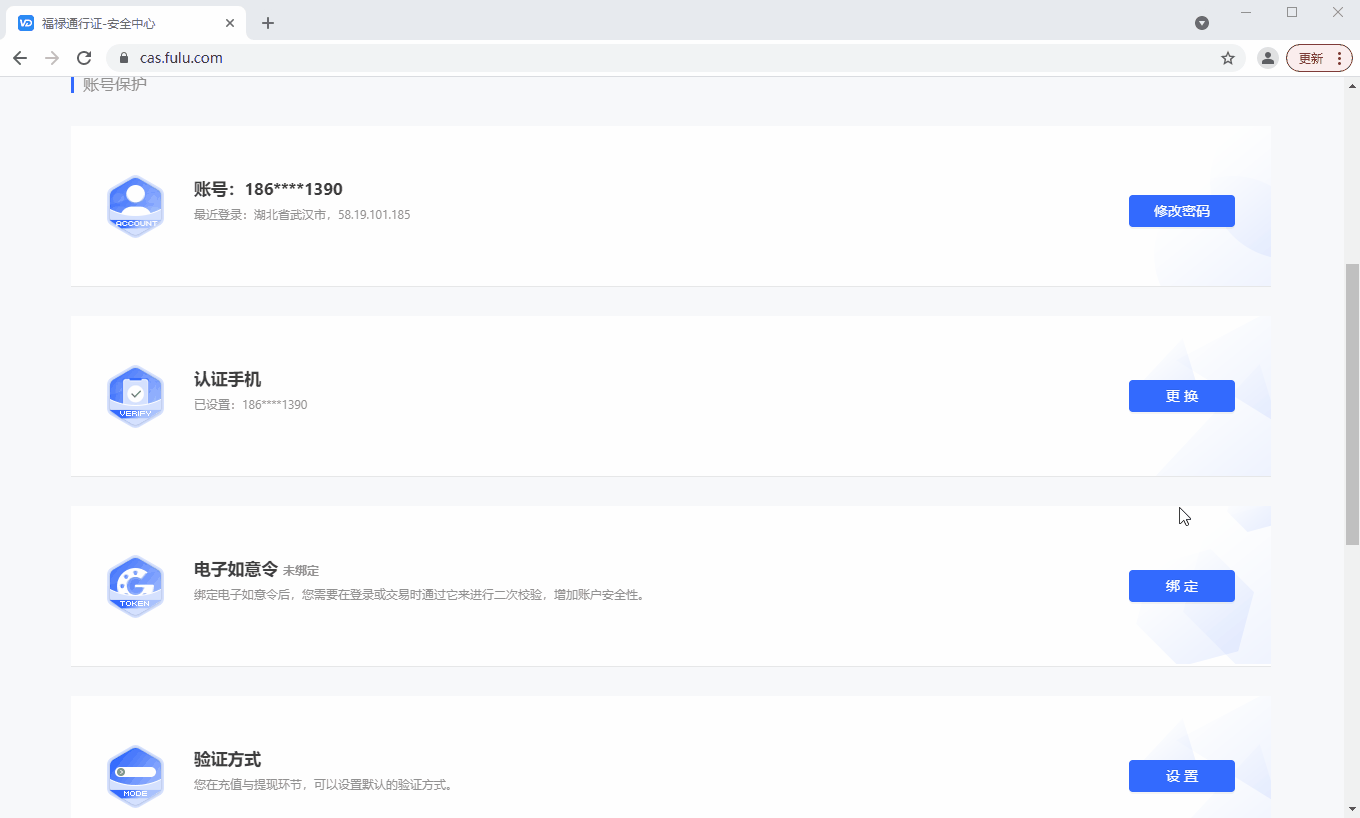
欢迎与我讨论交流!
福禄娃
你知道怎么使用Google两步验证保护账户安全吗?的更多相关文章
- 为Linux服务器的SSH登录启用Google两步验证
对于Linux服务器而言使用密钥登录要比使用密码登录安全的多,毕竟当前网上存在多个脚本到处进行爆破. 这类脚本都是通过扫描IP端的开放端口并使用常见的密码进行登录尝试,因此修改端口号也是非常有必要的. ...
- Google两步验证安装使用方法
http://www.williamlong.info/archives/2754.html
- Google 推出全新的两步验证机制
近日 Google 在官方的 Apps Updates 博客公布了全新的两步验证功能--Google 提示,新的功能通过与 Google App 联动,进一步将验证确认工作缩减到仅有两步,同时支持 A ...
- 两步验证Authy时间同步问题
Authy是我常用的软件之一,通常用于Google的两步验证,或者是其他基于Google两步验证的原理的衍生程序.比如Namesilo.印象笔记等均有使用. 先说说什么是两步验证. 两步验证 两步验证 ...
- 两步验证杀手锏:Java 接入 Google 身份验证器实战
两步验证 大家应该对两步验证都熟悉吧?如苹果有自带的两步验证策略,防止用户账号密码被盗而锁定手机进行敲诈,这种例子屡见不鲜,所以苹果都建议大家开启两步验证的. Google 的身份验证器一般也是用于登 ...
- SecureCRT两步验证自动登录脚本
简介 用于解决 Google Authenticator 的两步验证登录.涉及到密码,不建议脚本保存到公共环境. 安装oathtool Mac $ brew install oath-toolkit ...
- 使用KeePass管理两步验证
目录 使用KeePass管理两步验证 两步验证 KeePass中管理两步验证 KeeTrayTOTP插件使用 使用KeePass管理两步验证 文:铁乐与猫 2018-9-9 KeePass 是一款管理 ...
- OPTAUTH 两步验证详解
先贴图: 在对外网开放的后台管理系统中,使用静态口令进行身份验证可能会存在如下问题: (1) 为了便于记忆,用户多选择有特征作为密码,所有静态口令相比动态口令而言,容易被猜测和破解: (2) 黑客可以 ...
- 七牛云如何绑定二次验证码_虚拟MFA_两步验证_谷歌身份验证器?
一般情况下,点账户名——账户设置——安全设置,即可开通两步验证 具体步骤见链接 七牛云如何绑定二次验证码_虚拟MFA_两步验证_谷歌身份验证器? 二次验证码小程序(官网)对比谷歌身份验证器APP ...
随机推荐
- Redis核心原理与实践--列表实现原理之ziplist
列表类型可以存储一组按插入顺序排序的字符串,它非常灵活,支持在两端插入.弹出数据,可以充当栈和队列的角色. > LPUSH fruit apple (integer) 1 > RPUSH ...
- activemq启动错误UnsupportedClassVers rg/apache/activemq/console/Main:Unsupported major.minor version52.0
ActiveMQ与java的JDK是有版本对应匹配的. 下面提供一个匹配图: MQ版本号 Build-Jdk 依赖JDKapache-activemq-5.0.0 1.5.0_12 1.5+apach ...
- 【C++基础教程】第五课
上次的作业答案,非常简单. 第一题: 我们需要知道,字符(char类型)在计算机中存储的时候,是把这个字符对应的代码(专业术语叫做编码)进行存储.例如,换行符'\n'的代码就是10,'0'对应的代码就 ...
- PHP中使用DOMDocument来处理HTML、XML文档
其实从PHP5开始,PHP就为我们提供了一个强大的解析和生成XML相关操作的类,也就是我们今天要讲的 DOMDocument 类.不过我估计大部分人在爬取网页时还是会喜欢用正则去解析网页内容,学了今天 ...
- 网络IO模型与Reactor模式
一.三种网络IO模型: 分类: BIO 同步的.阻塞式 IO NIO 同步的.非阻塞式 IO AIO 异步非阻塞式 IO 阻塞和同步的概念: 阻塞:若读写未完成,调用读写的线程一直等待 非阻塞:若读写 ...
- TP框架 商城前台用户注册方法
//注册 public function register(){ if(IS_POST){ //接收数据 $data = I('post.'); $model = D('User'); $data[' ...
- 『GoLang』fmt包的使用
目录 1. fmt 包初识 2. 格式化 verb 应用 2.1 通用 2.2 布尔值 2.3 整数 2.4 浮点数与复数 2.5 字符串和 []byte 2.6 指针 2.7 其他 flag 2.8 ...
- 彻底关闭Windows自动更新
win+r--输入services.msc(服务管理窗口)停止windows update服务并禁用同时在恢复里,改为无操作 win + r --输入gpedit.msc(本地组策略编辑器)家庭版没有 ...
- python下载网-易-公-开-课的视频
import requests url='http://v.stu.126.net/mooc-video/nos/mp4/2016/03/19/1004187130_5b0f0056936d4f78a ...
- Mysql explain中key_len的作用及计算规则
key_len表示索引使用的字节数,根据这个值可以判断索引的使用情况,特别是在组合索引的时候,判断该索引有多少部分被使用到非常重要. 在计算key_len时,下面是一些需要考虑的点: 索引字段的附加信 ...
